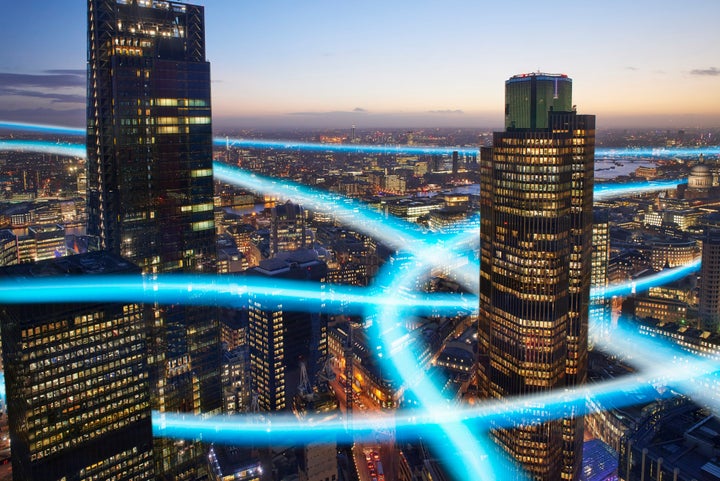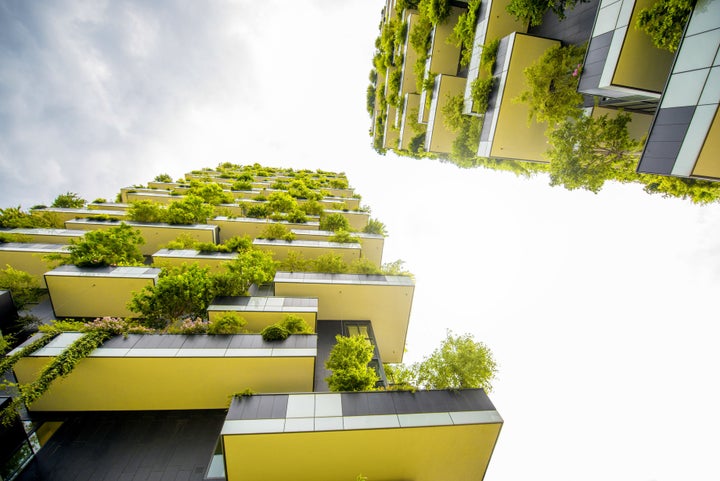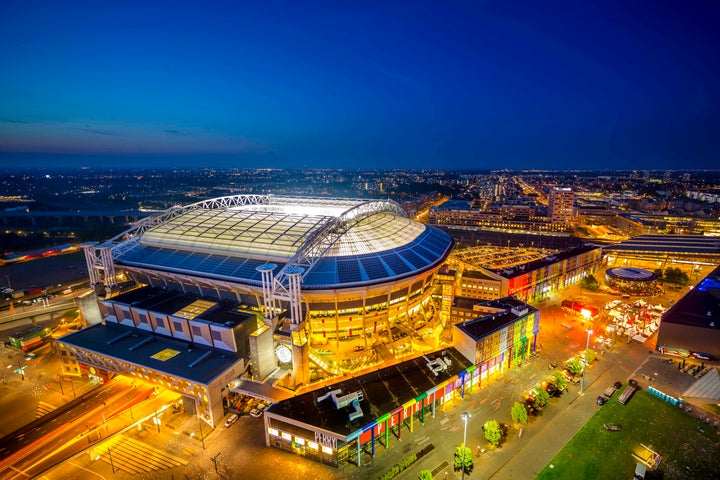Europe’s major cities – places such as London, Paris, Berlin, Rome and Madrid – have always been hotbeds of innovation and change.
Because of their size, complex infrastructure and diverse network of connections and relationships, it’s here that new ideas and technologies generate the most impact.
And it is their citizens at the forefront of such transformation, as Europe heads towards a technology-led eco-revolution.
By changing our lifestyles to embrace sustainability - be it in terms of lessening noise pollution by driving an electric vehicle, or using the sun to power our houses - we, the individual, are the catalyst.
So together with governments, large companies and technology start-ups, exactly what do we expect these cities to be like in 2025?

A fresh start
“Reduced nitrogen oxide emissions will see improvements in people’s health,” says Gareth Dunsmore, Electric Vehicles Director at Nissan Europe, citing the prevalence of electric vehicles in our cities. Those reductions are thanks to legislation, already in place, to phase out diesel and petrol vehicles it cities altogether, ultimately replacing them with electric vehicles (EVs) and other modes of urban transport.
Paris already bans older diesel vehicles, and insists that by 2030 there will be no diesel or petrol cars allowed in the city. Madrid intends to ban diesel by 2025, and has seen the sale of EVs shoot up by 90% in the previous year alone.
Rome is encouraging the use of EVs and hybrids by introducing ‘eco-Sundays’ where only these vehicles are allowed in the city, while Berlin operates a sticker system for cars – green, yellow and red indicating a vehicle’s emissions rating (red being the worst) and restricting or charging accordingly.
London meanwhile is concentrating on making its entire bus network electric and introducing an Ultra Low Emissions Zone (ULEZ) initiative.
Intelligent energy use
Cleaner air in cities is just the start of the transformations we’re likely to see through widespread EV usage. EVs are also be central to what is known as vehicle-to-grid technology (V2G).
This is where energy from an EV’s battery can be redistributed back into the grid, and used to help power your house, office and the city’s infrastructure, your car becoming a mobile power station within a localised energy ecosystem.
Looking to the near-future, Gareth Dunsmore sees self-driving as integral to this development too. “Nissan Intelligent Mobility and Pro Pilot technology will allow people to connect to the environment around them automatically, allowing easier access to electrified parking, and the ability to share their energy when they don’t need it.”
This energy sharing will happen even while you sleep, with cars able to drive themselves to charging bays and then re-park. What’s more, as sophisticated algorithms monitor and organise routes for self-driving vehicles, moving around the city should become more efficient and less congested.
In any case, there are likely to be less cars in the cities by 2025, as people utilise an increasing variety of mobility options. “We will have multi-modal transport systems making it easier to move between owned car, shared car, buses, bikes, trains and back to a car again,” says Gareth.

The city gets smarter
V2G is one key strand in the move towards the ‘smart city’ of the future, and will typify an environment characterised by greater connectivity and greener approaches to the city’s hardware, namely its buildings and infrastructure.
As Francisco Carranza Sierra, Managing Director of Nissan’s Energy Services, points out, “Every house and every building will have its own solar panels and its own energy storage solution. This new configuration will give much more decision power to the people versus a model today in which our customers are just passive consumers.
“Digitalization and decentralization trends will create new business models in which the interaction between people, houses, cars and their energy/mobility company will be much higher. Cities will have the capability of becoming truly 100% sustainable and 100% digital.”
Buildings are already becoming greener, as we see in architecture like the Bosco Verticale (Vertical Forest) in Milan, a high-rise building whose exterior ripples with organic life, its balconies supporting 730 specially cultivated trees, 11,000 plants and 5,000 shrubs.
This idea of living buildings is taking off elsewhere in Europe too, such as the ‘smog-eating music school’ in Kraków, Poland, with a roof that consists of specially grown moss able to absorb pollutants like nitrous oxide and ozone.
New buildings might also make use of concrete that contains what’s called a photocatalyst, and which reacts with sunlight to neutralise airborne pollutants, breaking them down into little more than oxygen and water.

Energy storage will be commonplace
In order that such technologies of V2G are effective, energy storage in homes and offices will be far more common by 2025, and even in much larger structures like stadiums. Already we have initiatives like the Amsterdam ArenA, home to football club Ajax, which makes use of re-purposed batteries from Nissan’s LEAF.
These batteries will ultimately replace the stadium’s diesel generators and will, in turn, enable the stadium to power the surrounding neighbourhood. This is precisely the kind of energy interaction that Francisco is talking about, setting cities on their way to becoming 100% sustainable.
“We see the core key components to this process as the car, solar panels, energy storage and the software that will allow efficient management of all these elements,” he says.
“Nissan is developing just such technologies and services, evolving into a company that provides future proof, sustainable and affordable energy and mobility solutions for our customers.”
Energy generation could also come from some more unexpected sources. For example, UK company Pavegen aims to turn our footfalls into energy. As people step on specially constructed tiles, their weight creates a rotary motion in an embedded generator to create electricity, which is then stored off grid.
Each tile is also fitted with technology that relays real-time movement data, so the flow of foot traffic can be analysed and routes made efficient in much the same way as vehicular traffic discussed earlier. But there’s another upside: if you’re walking on the tiles, and therefore providing energy, you will be able to connect via a phone app and earn ‘digital currency’, which can be used to offset your own energy costs.
Joined up thinking
Ultimately, it will be through a combination of political, commercial and personal efforts that the city of 2025 will take shape.
Francisco believes this comes down to “affordable and reliable solar generation, home energy storage solutions and energy management software that optimises all the flows and allow the integration with the sharing economy”.
In other words, once again, we the individuals are at the centre of change.
If we decide to have a positive environmental impact, even at a small level, then this empowerment spreads and, very soon, the whole city joins in.